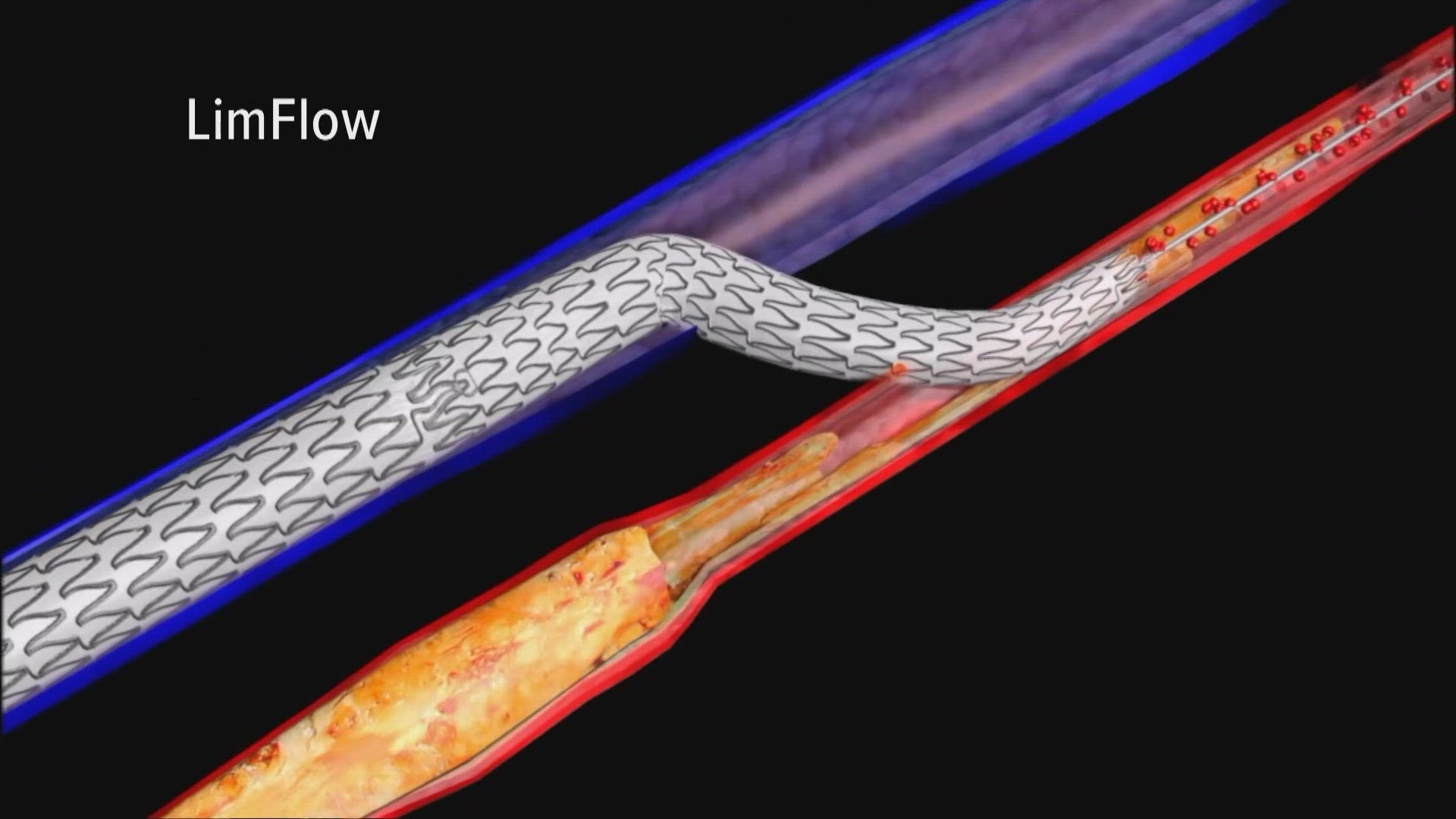CLEVELAND — Cindy Elford was the first patient at University Hospitals Cleveland Medical Center to have her leg saved by the LimFlow device. We met just after the procedure. Years later, she's still doing well.
“I think it's a lifesaver for so many people,” Cindy said.
LimFlow’s FDA approval follows New England Journal of Medicine publication of results from the PROMISE II Multicenter Prospective Study, co-led by University Hospitals (UH) Harrington Heart & Vascular Institute, which found that the therapy enabled most patients treated to keep their leg and experience wound healing.
Eighty percent of non-traumatic leg amputations happen because of complications from diabetes, and African Americans are four times more likely to undergo amputation compared to whites. We first met Jaqueline Early in 2020, she was able to walk again after LimFlow brought blood back to her feet.
LimFlow therapy is a minimally invasive procedure that bypasses blockages in arteries of the legs and restores blood flow using a vein for the blocked artery. It may help thousands of people suffering from a severe form of vascular disease known as chronic limb-threatening ischemia (CLTI).
“Revascularizing patients and saving the limbs is much more cost effective than a major amputation,” Mehdi Shishehbor, DO, MPH, PhD, President of UH Harrington Heart & Vascular Institute, and Angela and James Hambrick Chair in Innovation, as well as lead author and co-principal investigator of the study said.
Amputation is the 6th-most expensive type of surgery based on complications, hospitalizations and readmissions. Now that LimFlow has FDA approval, Dr. Shishehbor says it will be covered.
“Because this is novel new technology, CMS typically gives it a transitional pass-through, which means for two to three years, CMS will cover this and allow us to treat patients with whatever insurance that they have, Medicare, Medicaid and private insurance,” he said.
More than 60% of Dr. Shishehbor's patients are minorities, and often he sees them when the damage has progressed to the point of amputation. LimFlow may help, but he hopes to see them long before it's needed.
“Any time a patient, especially those with diabetes or kidney disease have any skin breakdown, ulcers, any form of gangrene on their foot, they need to immediately reach out to a vascular expert and get a second opinion,” he said.
Saving limbs can also be a lifesaver. One in three amputees experience depression or anxiety. Many feel phantom pain from the missing limb and nearly half of amputees with vascular disease die within five years of amputation.

